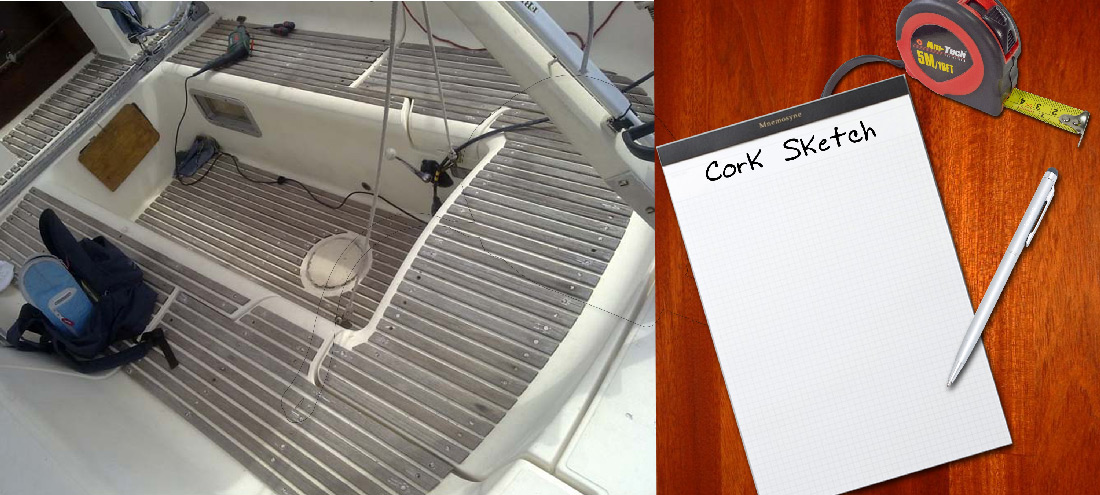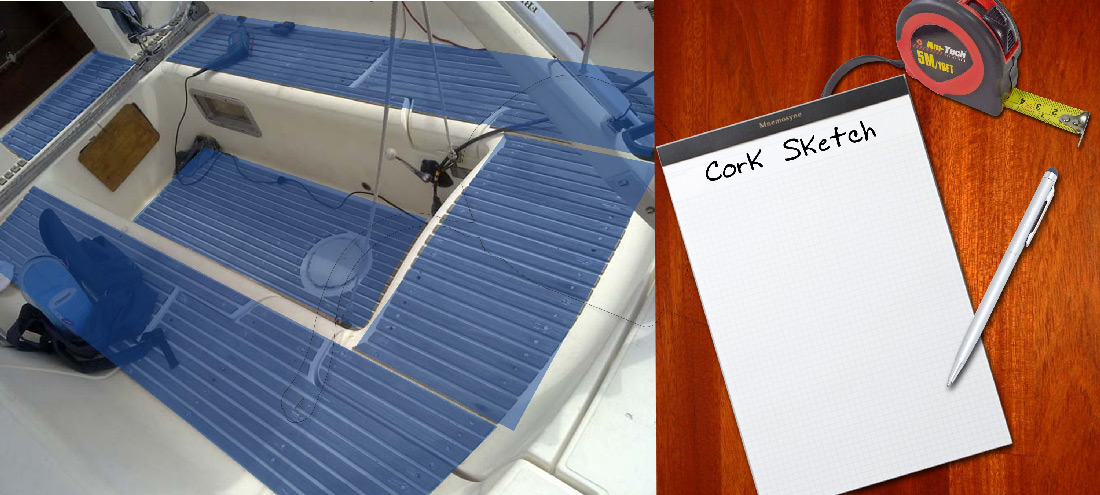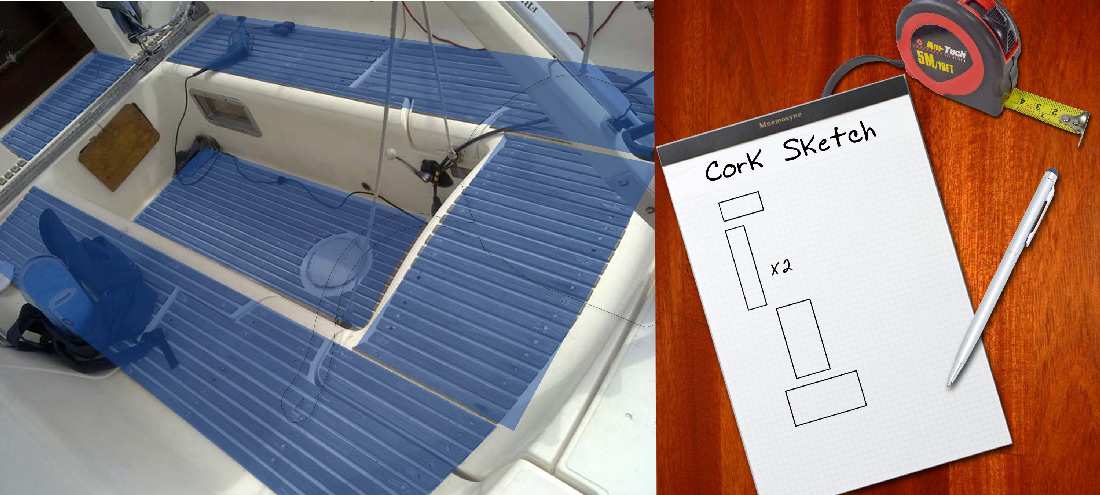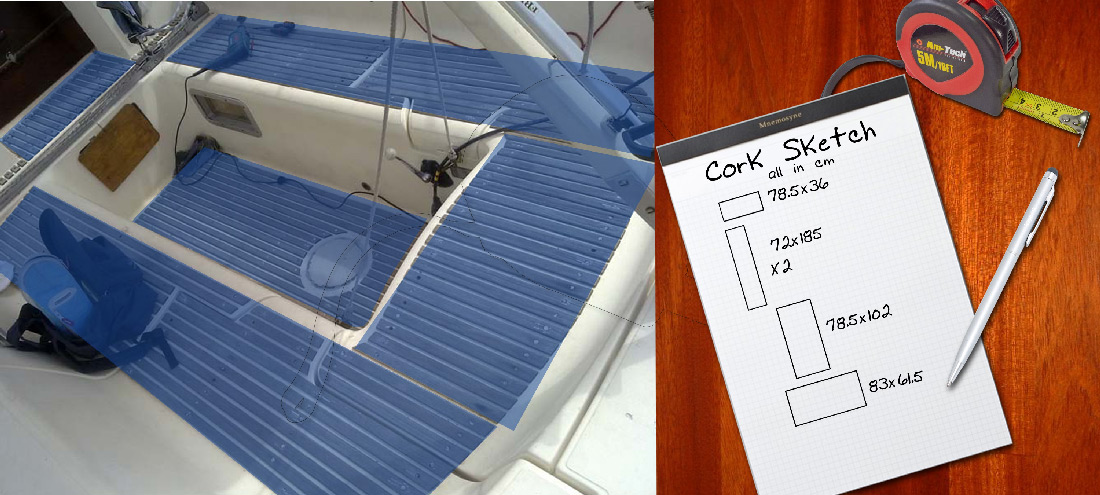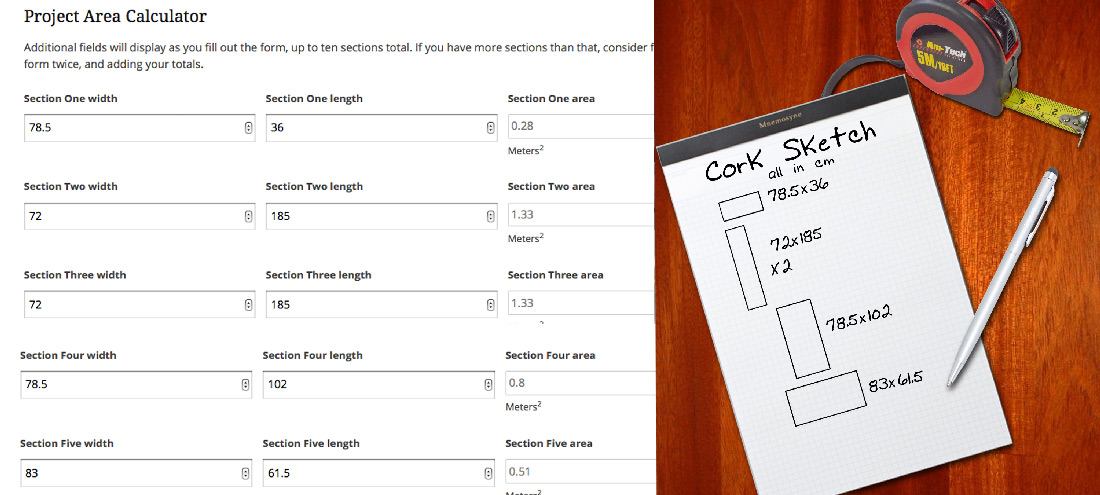
Measuring
All cork products are sold in metric units, so it’s certainly easiest to measure that way if you can. If not, we have a simple converter you might find handy, or see blow for the link to the calculator in inches. Avoid the temptation to simply add all your dimensions together for a total, as this will result in an inaccurate calculation, followed by an inaccurate (and grossly exaggerated) estimate. Convert each measurement to centimeters (if necessary), and then use the calculator below to work out the square meters of each section, and your project total. You should typically add 5-15% additional for cutting waste. (Our Project Area Calculator makes all this very easy.) Now you’re ready to go shopping.
Overage/Waste
Every project will have a certain amount of waste material, which is why it’s important to add 5-15% to your order. Aggressive curves, triangular or trapezoidal shapes will all result in substantial waste. You have two options:
Option 1) Measure each section of your project as if they were complete rectangles. Your measurements will reflect the longest length and the widest width of each area. This method will result in a larger calculated area, but virtually no risk of coming up short.
Option 2) Measure each section as accurately as possible, and add a figure for overage. Realize that you will be nesting odd shapes together wherever possible, and that some pieces may end up with multiple seams. Good rules of thumb for determining overage for your order:
- Perfect rectangles, or only slightly rounded rectangles: 5% overage
- Mostly proper rectangles with a few sections with curved ends: 10% overage
- Roughly half rectangles and half trapezoid or narrowing shapes: 15% overage
- Circles, lots of dramatic curves, odd corners: 20% overage

